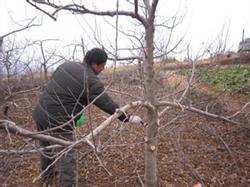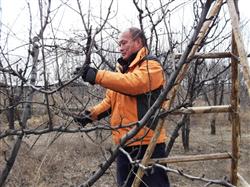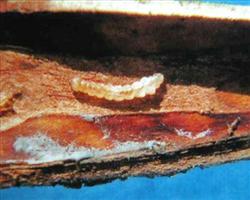Teach you how to determine the best harvest time for apples

Under normal climatic conditions, the growth period of apple fruit generally has a relatively stable period of growth and development. Generally, early-maturing varieties mature at 60 ~ 100 days after full bloom, middle-maturing varieties are 100 ~ 140 days, middle-and late-maturing varieties are 140 ~ 160 days, and late-maturing varieties are 160 ~ 190 days. In order to facilitate fruit growers to correctly understand and harvest at the right time, the introduction is as follows: first, pericarp color: most apple varieties have regular changes in pericarp color during development, that is, the peel background color gradually changes from dark to light green or yellow. Some coloring varieties are often painted earlier, but the peel background color is still green, and only when the peel background color changes from green to yellow is the performance of fruit ripening. Second, fruit stalk: when the fruit is really ripe, a separate layer is formed between the base of the fruit stalk and the fruit branch, and the fruit is slightly subjected to external force. It will fall off. Third, seed color: in the process of fruit development, seeds have a law of gradual browning. Cut open the fruit, and if the seed turns brown, it means it is ripe. Fourth, fruit firmness: with the fruit ripening, the pulp becomes softer, the sugar content increases, the firmness decreases gradually, and the fruit firmness is relatively stable when the fruit is ripe. Fifth, climate and market supply and demand in that year: if there are natural disasters, manpower should be organized to rush to harvest in advance. According to the market situation, in order to obtain better economic benefits, it can be picked early or late. Sixth, if it is bagging to remove the fruit bag, turn the fruit, pick leaves, spread reflective film and other color promotion measures, so that the fruit color is all colored into pink, it can be picked, this is the best picking time for commodity color, but too heavy coloring is not welcomed by the market.
- Prev

Old apple tree grafted begonia
In recent years, with the increasing demand for large-size begonia in greening projects, large-size begonia is obviously not enough in greening nurseries, such as Xifu begonia and royal begonia, which are widely used in various places. Apple trees of the same family and genus as begonia are used as rootstocks for grafted begonia. After the peak period of fruit production in the orchard.
- Next

Five methods to control apple gibberellin
Seedling quarantine: Apple small gibberellin is the quarantine object, which can be transmitted to the new area with the seedlings. Therefore, the quarantine work of seedlings out of the nursery should be strictly strengthened to prevent spread. Protect natural enemies: in the mature larva and pupa stage, there are two kinds of parasitic wasps and one kind of parasitic fly, and the parasitic rate can reach 36% in orchards that are not often sprayed.
Related
- Moge, come on! The staff of the peasant association in the producing area of cantaloupe were frightened when the crowd gathered.
- Causes and Solutions of low Fruit setting rate of Apple
- Symptoms and control measures of passion fruit virus disease
- Fruit growing lesson: how do apple orchards keep high yields?
- Can you build orchards in the mountains? What are the pros and cons?
- How to manage the coloring period of Crisson grape?
- This paper introduces the processing technology of two kinds of fig products.
- How much is a month for retired teachers in rural areas by 2020?
- How can strawberry planting increase sugar content? We should pay attention to management in many aspects.
- What are the cultivation techniques on how to improve the yield of golden fruit?

